Kaunas lies at the confluence of the Memel and Neris rivers about 100 km west of the capital Vilnius. Today the second largest city in Lithuania, Kaunas was first mentioned in 1361 and received its city charter in 1408. Between 1920 and 1940, when Vilnius belonged to Poland, Kaunas was the capital of Lithuania.
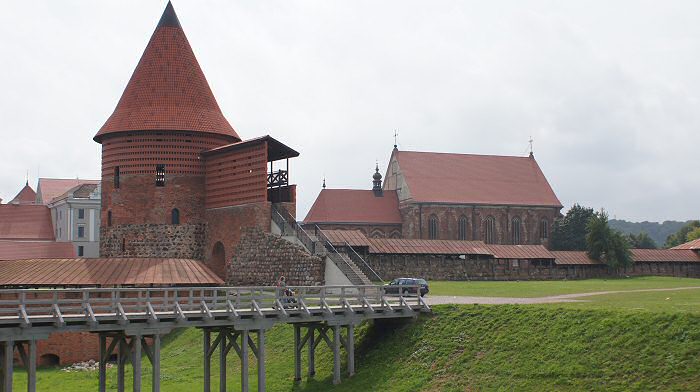
Not much is left of the proud Kaunas Castle. In the background you can see the originally gothic St. George's Church.
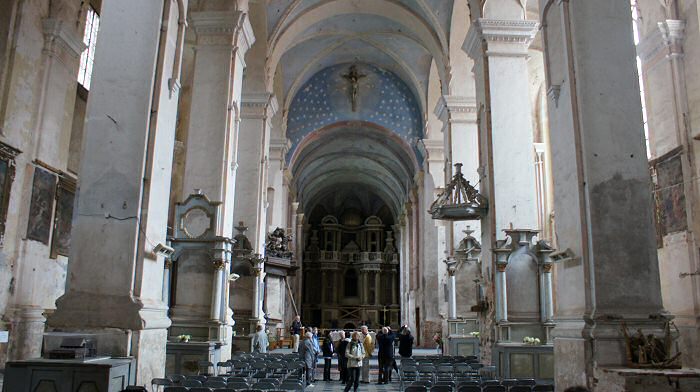
Saint George's Church in Kaunas was closed by the Soviets and used for military exercises. After the fall of communism, it was given a new roof to protect it from further decay. The interior has not yet been restored. This is how it looked when we visited it in 2012. A sad picture.

This is the altar in 2012. The interior renovation began 9 years later. See a picture from 2021 - click to enlarge!
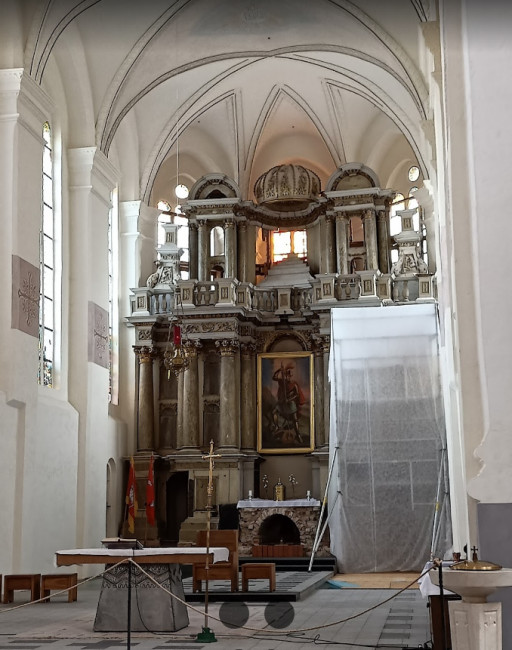
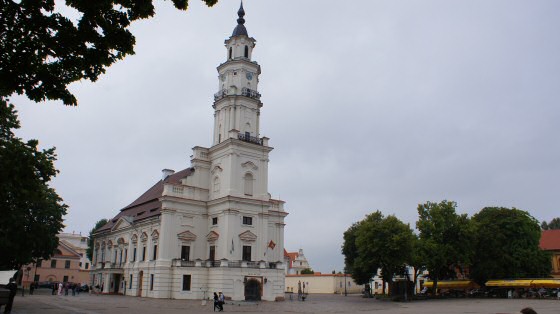
The 53m high tower of the "White Swan" rises above the old town. The originally Gothic town hall was rebuilt in the 18th century.

The Jesuit Church on Rathausplatz and our photographing group.
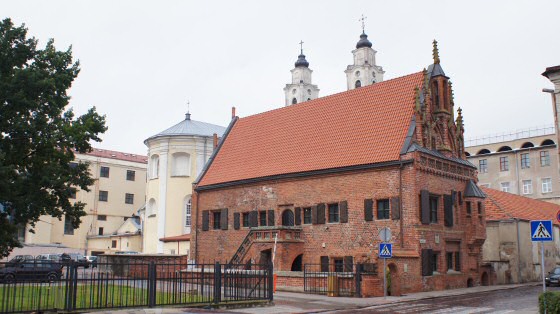
The Perkunas House, a jewel of late Gothic architecture.
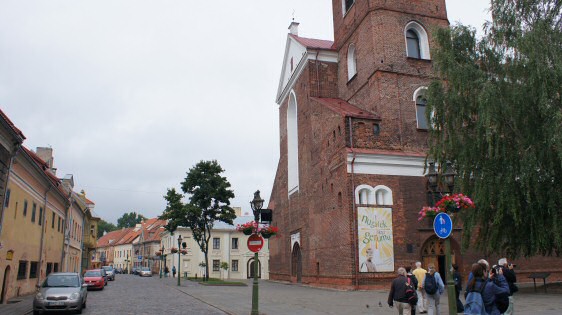
We visit the Peter and Paul Cathedral. From the outside it looks a bit unimpressive. The 41m high bell tower is unfortunately somewhat cut off in the photo. But you can see our group taking photos.
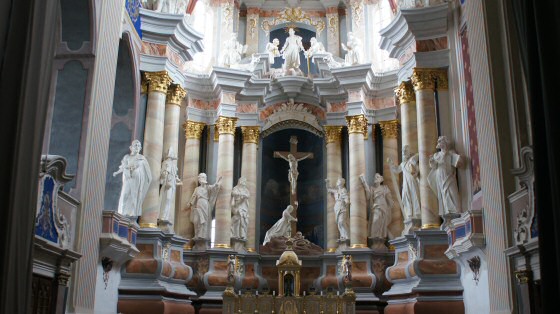
The baroque interior is impressive. Here is a view of the baroque high altar from 1775. In the centre are the sculptures of the Crucified and the mourning Mary Magdalene, above them the figure of the Risen Christ, adored by the kneeling apostles Peter and Paul. Below them, between the columns, are eight statues of saints.
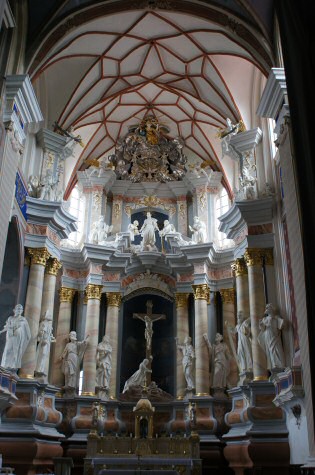
The town and market church on the town hall square was begun around 1410 in the Gothic style and changed several times over the centuries after war and fire damage. Its valuable furnishings reflect the prosperity of the trading town, especially in the Baroque period. In 1921, the church was given the rank of basilica minor. With the establishment of the Archdiocese of Kaunas in 1926, it became its cathedral.
Above the baroque altar you can see the Gothic vault ribs.
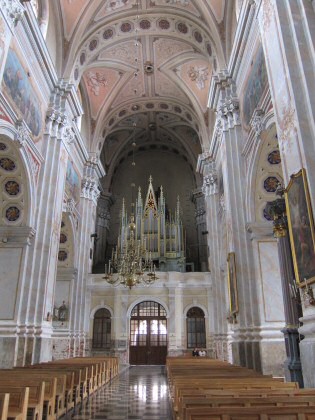
The organ was built in 1882 by a Lithuanian organ builder (Juozapas Radavičius) and is based on late romantic French models.
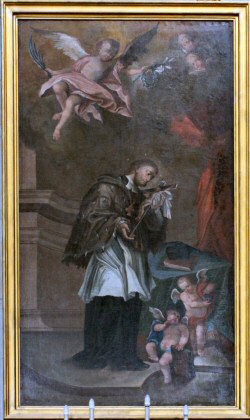
On the right side in the nave is this picture. This could be a holy Nepomuk after all.
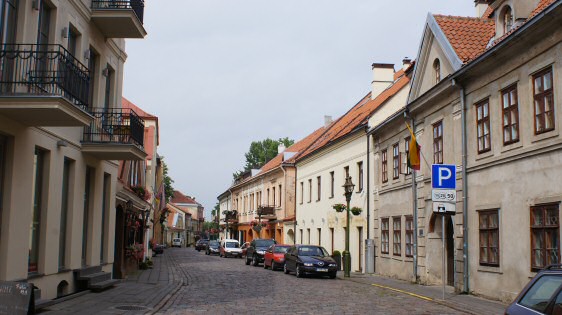
Small alleyways in the old town of Kaunas.